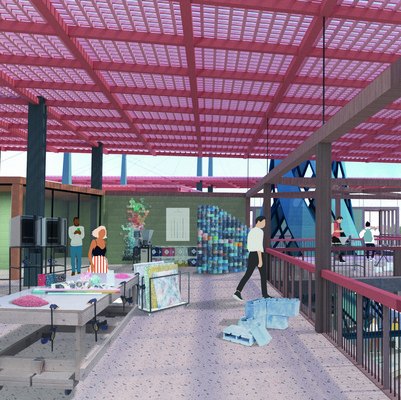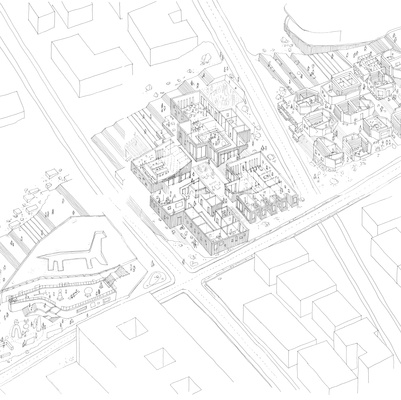“The River of Salt” describes a unique and slowly fading ecosystem in the city of Antofagasta, Chile. Due to water-heavy mining activities in the region, the river is almost dry. This project restores its natural conditions and provides much needed green space to the otherwise arid city, using pumped hydro scheme and exploring the potential for blending energy infrastructure and the public realm
SITE: PROBLEMS & POTENTIALS
Saline river flows in the city of Antofagasta, Chile. The river is drying up, due to mining activities in the region. The site is forgotten by the city, despite various recreational, didactic & landscape potentials being present around. The river bed is home to endemic flora & fauna, most notably halophytes (plants that thrive in salt water).

THREE PILLARS OF THE PARK
The main objective is to regreen the river and return to the previous natural conditions with endemic flora and fauna. This is done by using some of the seawater from a pumped hydro energy scheme that works as a giant battery for solar panels of the Atacama. The site is patched with infrastructure, especially recreational activities present around the river bed.

The industry that once destroyed the river is brought in to provide water for the halophytic vegetation in the form of pumped hydro scheme.

NIGHT
At night water is released from the top reservoir, spinning turbines and producing electricty. Most of the water goes back to the sea through the pipeline, providing water for recreational uses. Some of the water is released to the wetlands storing it for the next day.

DAY
During the day when solar panels work powering the turbines water is pumped up. The water from the wetlands is gradually released throughout the day creating constant stream flow and watering vegetation. Some of the water is pumped for greenery on higher levels of the site and some is used for cooling mist installations along the pipeline.







































































